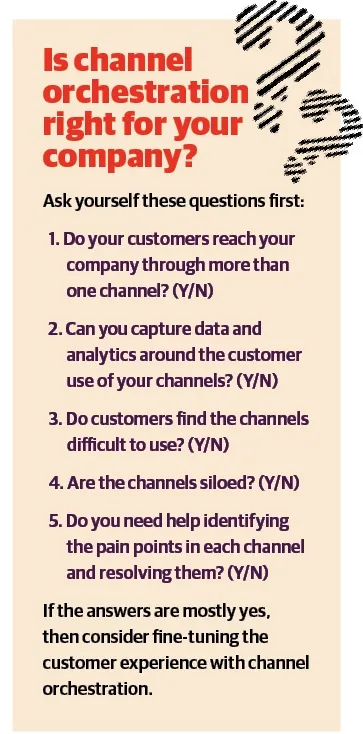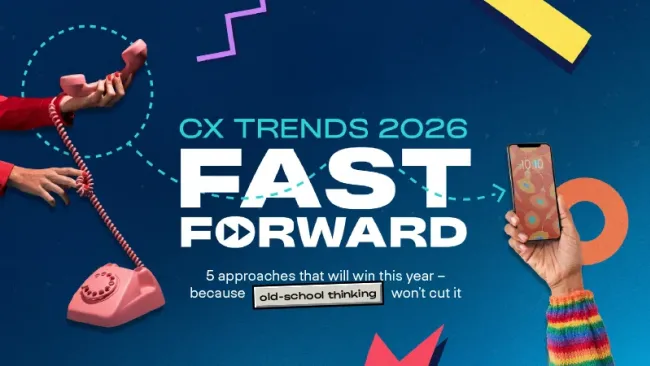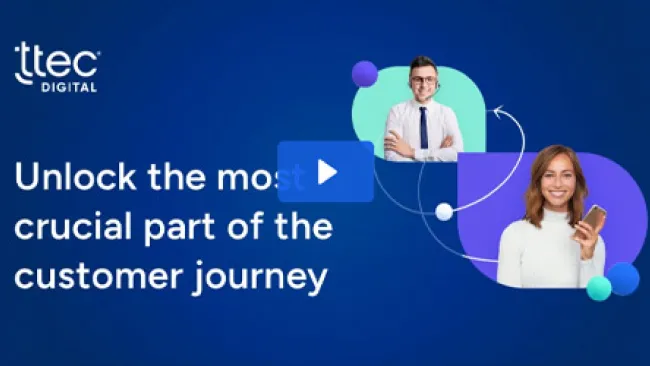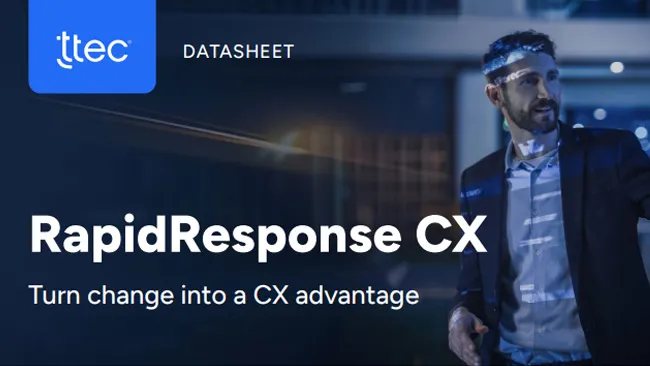The line, “if you build it, He will come,” may have worked for Kevin Costner’s character in Field of Dreams, but it doesn’t necessarily work that way in customer service. From social media and mobile apps to chat and video, businesses have many more ways to support customers in addition to the telephone. However, it’s not uncommon for customers to miss or ignore these tools. The good news is there are ways to change those behaviors with a robust data analytics and customer education strategy.
Find the right mix of humans and technology
There’s a misconception that customers only want to speak with human associates. What customers want is to have their problem understood and solved quickly, regardless of whether they’re communicating with a human, a bot, or on their own. However, bots have limited uses—they can only respond to straightforward questions and perform simple tasks.
As a result, many customers turn to what’s familiar: calling the business’ toll-free number. This tendency isn’t limited to Baby Boomers, either. In fact, millennials call their bank at nearly three times the rate of older customers, according to a study by Bain & Company. But it can be equally frustrating to wait several minutes to ask a quick question or be forced to repeat the question. This leaves companies with an undesirable scenario: spending a lot of money to deliver a poor experience to the customer.
What’s more, numerous studies have shown that consumers will switch providers after just one bad customer service experience. More and more companies, therefore, are coming to the realization that they need to overhaul their customer experience and provide customers with the right kind of support, both digital and traditional.
What is channel orchestration and why do we need it?
Channel orchestration is an approach that leverages customer preferences for different channels while driving down costs and improving the quality of the experience. Just as an orchestra is composed of various instruments coming together harmoniously, it’s about bringing different interaction channels together to perform harmoniously for the customer.
For example, a financial services client was experiencing high call volumes at its contact center despite efforts to digitally transform the customer experience. Although the firm offered robust mobile and digital self-service options, there was a group of frequent callers who continued to rely solely on the phone to handle all their banking needs.
We started with an evaluation of the call volumes. The analysis helped identify four customer segments, each with a different reason for calling. The four segments were: no self-service option; not aware of self-service; tried self-service unsuccessfully; and aware of self-service option but didn’t try it.
Our next step was to launch a test-and-control pilot to identify the segments that were most likely to respond to a customer education program on the benefits of self-service channels.
• Frequent callers were directed to pilot or control associates. Control associates performed their duties as usual, but the pilot associates offered the caller information about the self-service options.
• The primary objective of the Caller Education Inbound Pilot was to deflect future frequent callers (digitally active and non-digitally active) to self-service/digital channels through a series of bundled communications and call treatments. This pilot provided frequent callers consistent enhanced service throughout the pilot period.
• Pilot associates educated callers using advanced features such as co-browse, simulator, and on behalf of, in addition to other personalization methods. Associates also followed up with a personalized email to customers to reinforce the self-service functionality, or walked the customer through a demonstration of the self-service IVR system.
Having a test-and-control framework enabled us to drill into the data and produce insights that would have been impossible to produce otherwise. For example, we determined that caller education helped reduce call volume for only certain call reasons. With this information, associates only offered information about the self-service options when it was likely to reduce call volume.
Overall, the Caller Education pilot helped reduce the 30-day callback rate by 18 percent and these improvements were sustained in 60-day and 90-day callback rates. Supported by these findings, we developed a data-driven rollout plan (prioritized by call reason) that provided close to $3 million in annual savings for the company.
Therefore, instead of having customers call the bank for routine questions, such as checking an account balance or changing a PIN, we were able to understand the reasons they were calling and use that insight to teach them how to use the digital self-service options, allowing them to get the help they needed faster and more conveniently. This also freed up associates to focus on more complex consultative calls or account issues.
A word about channel orchestration metrics
Understanding which metrics are important for guiding a channel orchestration strategy and measuring its success is also critical. Before deploying channel orchestration, there are several key questions to ask: Which channels are my customers using? What percentage of customer transactions are completed via self-service versus a phone call? And what percentage of those phone calls could be resolved through self-service?
These questions will help determine which channels to focus on. Real-time data may also affect those decisions. Increasingly, data insights are being derived from both traditional customer feedback surveys and real-time analytics. As a result, companies are able to be nimbler in their responses. For example, if a payroll company notices that a processing error in one area of business will disrupt other areas of the business, it can proactively communicate the disruption to its clients in real time through preferred channels in a way that’s organized and consistent.
What we’re also seeing is that channel orchestration metrics are becoming more personalized and outcome-driven versus being solely focused on operational effectiveness. For instance, instead of prioritizing average handle time, service level, and other operational metrics, companies are increasingly asking about outcome-based metrics like customer effort score and customer satisfaction.
Also, while customer lifetime value is a common metric for estimating marketing costs, it’s not typically used in contact centers. With the advent of data integration, that’s beginning to change. Now, a contact center associate can see, for instance, that this individual has been a customer for five years, has interacted with the brand’s website three times in the last month, and is worth about $20K in potential revenue. This information could help personalize the products or services that the associate brings to the customer’s attention, whether it’s over the phone, social media, or chat.
Hit the right notes with customer understanding
While it wouldn’t be as catchy, Kevin Costner’s famous line would be more accurate if it read: “If you build it, test and iterate, and incorporate feedback, they will [most likely] come.” Creating great customer support requires more than the latest digital tools—it requires a keen understanding of customer needs, preferences, and expectations and the willingness to try new approaches. Only then, will companies hit a home run with customers.
















